Madrid bus tour + Palacio Real visit
Get to know Madrid’s most important landmarks from the bus, and visit the Royal Palace, the Spanish capital’s most significant historic monument.
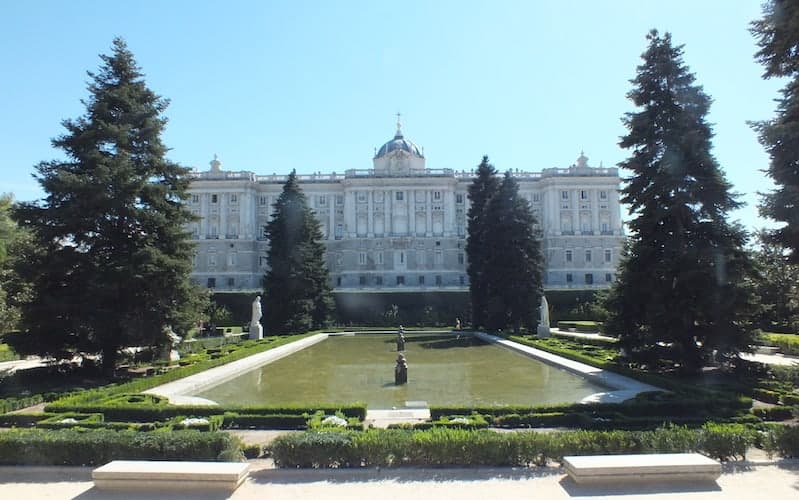
We will begin our tour with the bus route and finish with the guided tour of the Royal Palace.
Bus Tour in Madrid
On this bus tour through Madrid, discover the city’s most celebrated sites. Get to know the charm of the city and the best attractions of the Spanish capital.
Unlike the other guided tours to Madrid that we have made available to you, on this tour we do not claim that you will get to know the city in-depth. Our objective is to introduce you to the historic Madrid, the financial district, the most commercial streets and the main leisure areas so that you can visit those that seem most interesting at a later time.
The journey is made almost entirely by bus, but there will be time to enjoy three stops next to other emblematic areas of the capital: the Prado Museum, Las Ventas Bullring, and Bernabeu Stadium, the field of Real Madrid.
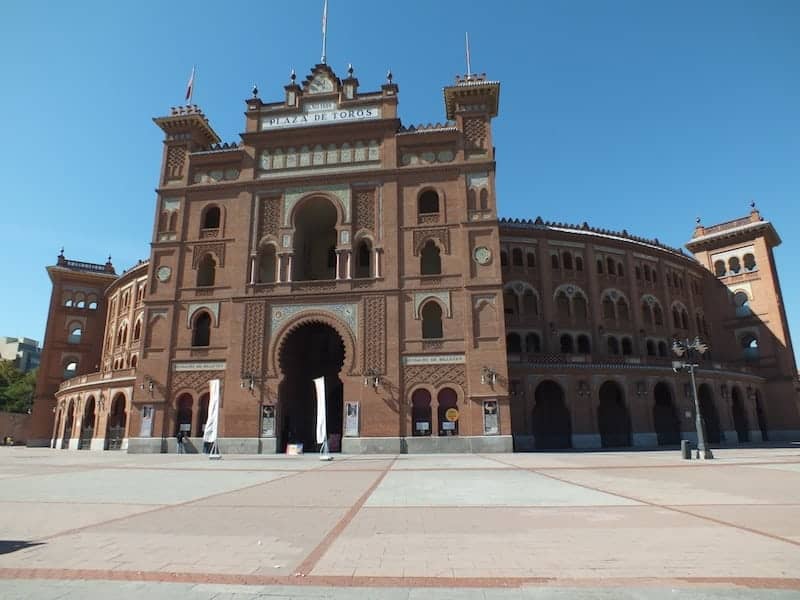
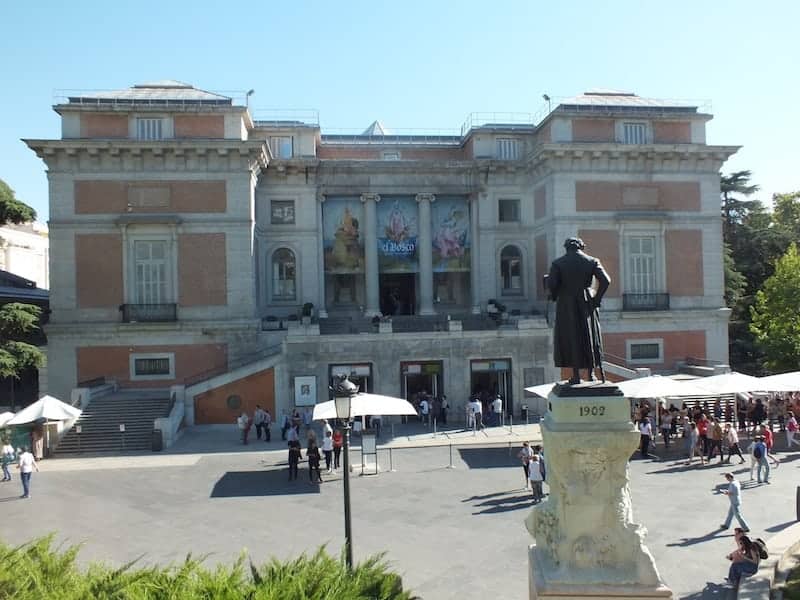
During the journey we will travel through Madrid’s two largest and most important parks: Parque del Oeste and Parque del Retiro. The first was designed at the beginning of the 20th century on the banks of the Manzanares River as an expansion of the city. Retiro Park, in contrast, is an historic enclave, where nature and art have shaken hands since the 17th century.
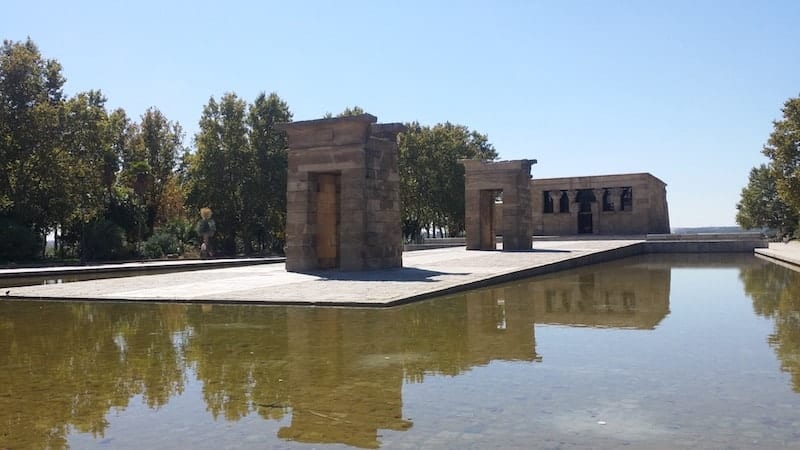
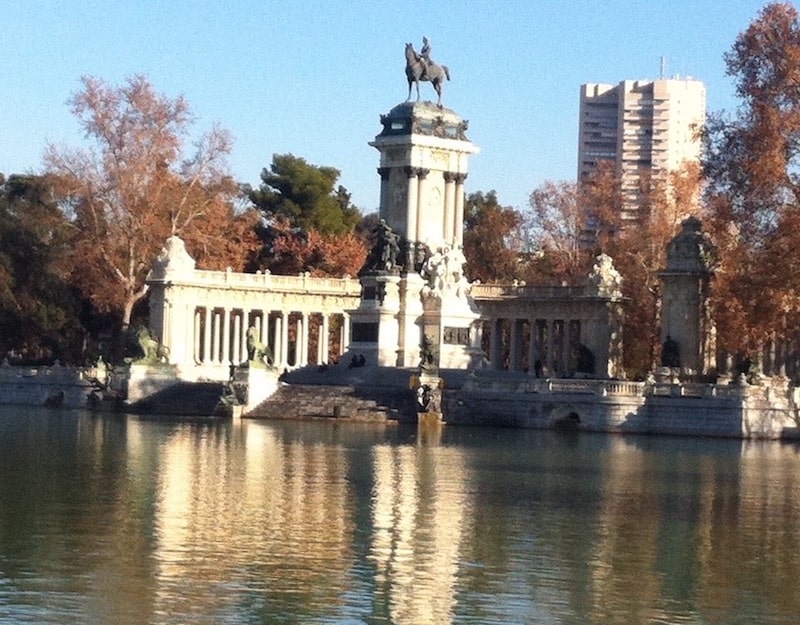
We will also cross the most well-known plazas of Madrid: Plaza de Oriente, Puerta del Sol and Plaza de España. Each has its attractions: the Plaza de Oriente has impressive views of the Royal Palace; Puerta del Sol has its constant bustle, the presence of the post house with its clock tower, and the symbol of the city, the bear and the strawberry tree, represented in a bronze statue; and at Plaza de España two of the first skyscrapers built in the country stand out, and the statues of Don Quixote and Sancho Panza preside over the plaza.
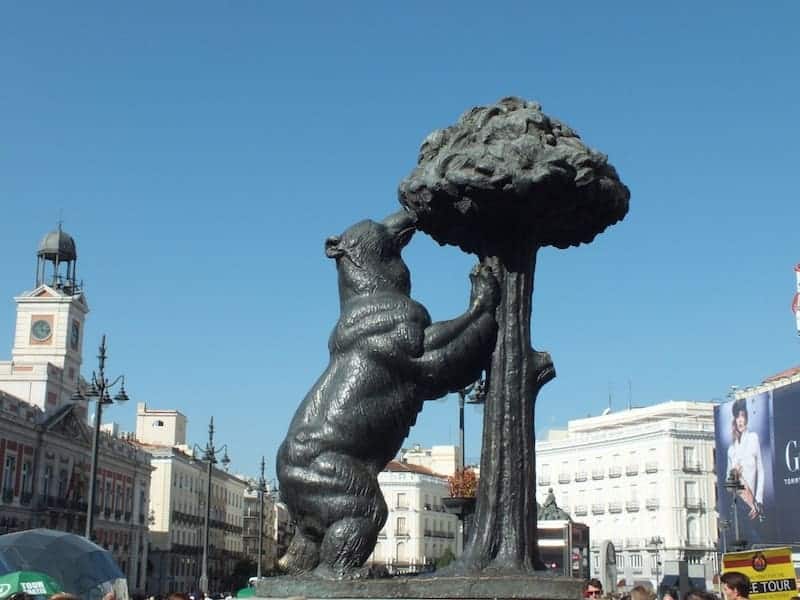
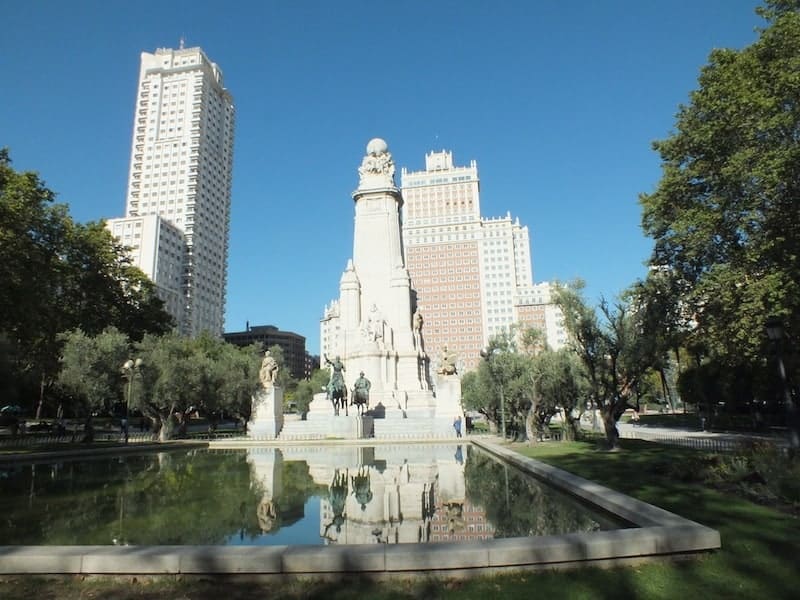
In addition, we will discover the Plaza de la Villa, full of historic buildings, and the enormous Plaza de Colón, a more contemporary symbol of Madrid.
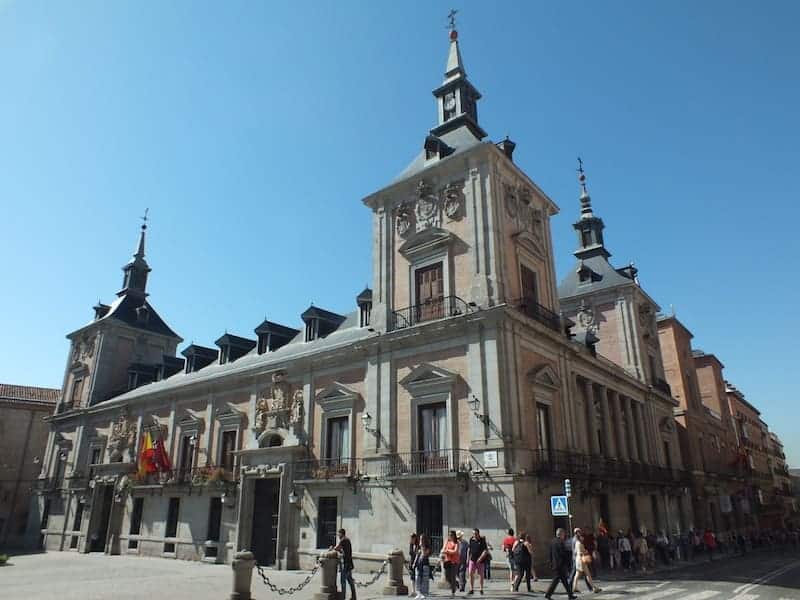
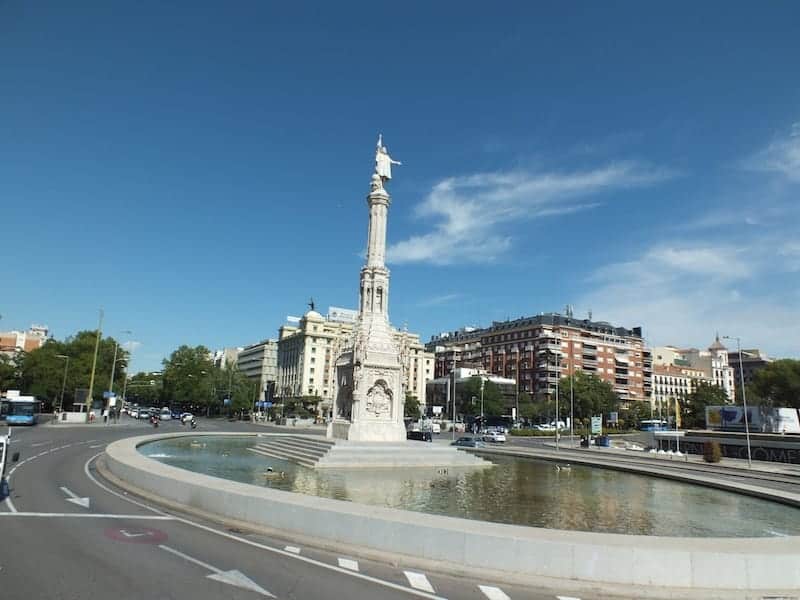
We will drive along the capital’s main roads, such as the centenarian Gran Via or the quite lengthy Alcalá street, which is actually the longest road in Madrid. But that’s not to mention the Paseo de la Castellana or the glamorous Serrano street, known as being one of Spain’s most luxurious streets, where large boutique and jewellery brands are concentrated.
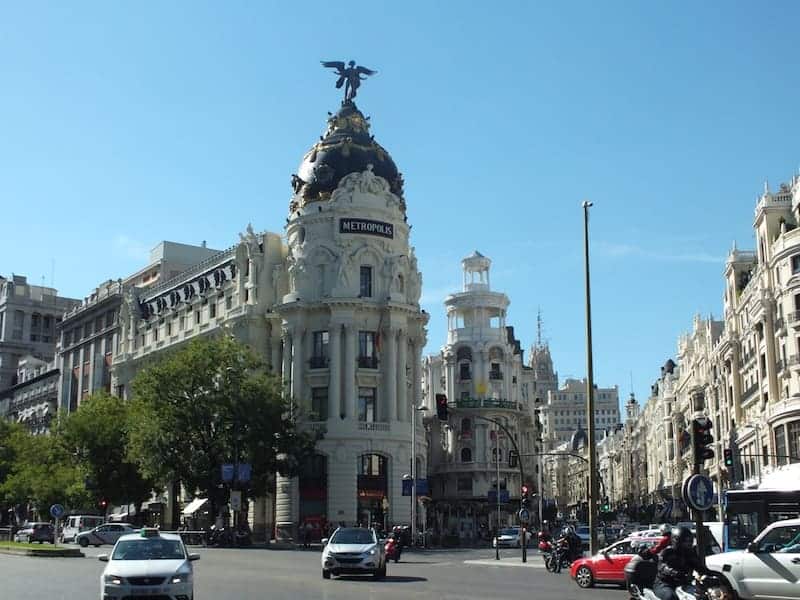
We will see two of the old royal gates that gave access to Madrid: the Puerta de Alcala, symbol of Madrid in the Enlightenment from King Carlos III, and the Puerta de Toledo, raised after the War of Independence by order of Fernando VII.
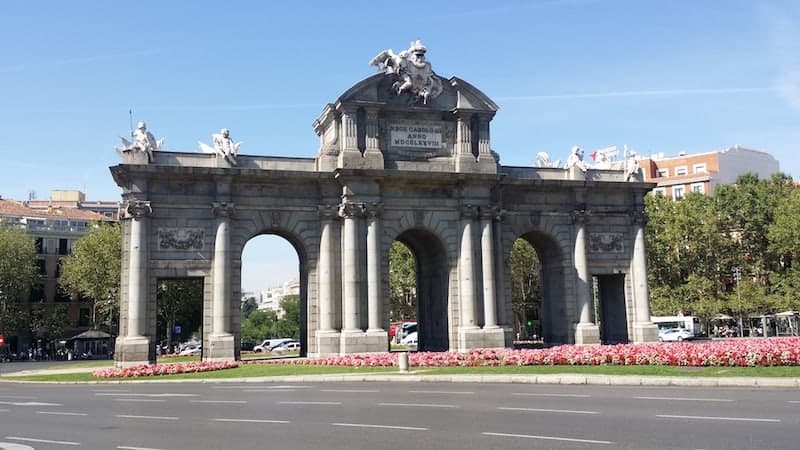
The excursion will bring us near Madrid’s two most popular fountains: Cibeles and Neptune. These are two neo-classical works from the 18th century that represent the Goddess of the Earth and the God of the Sea, respectively. They are also the meeting places for celebrating the wins of the city’s two most representative football teams: Real Madrid and Atlético de Madrid.
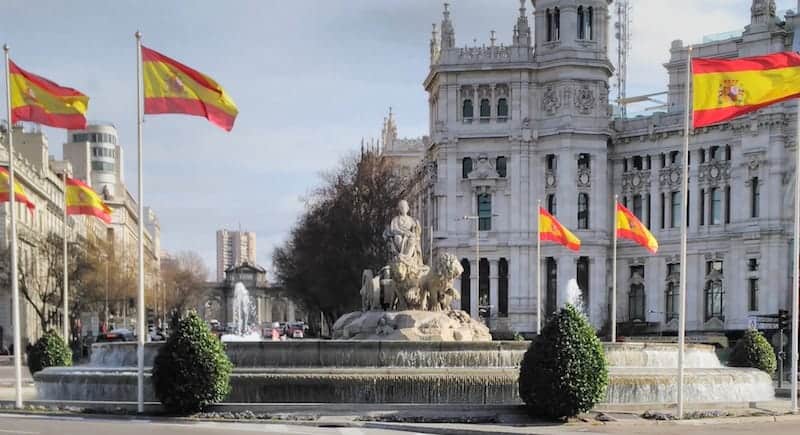
We will get to know the two buildings where political activity takes place at a national level: Palacio de las Cortes, which houses the Congress, and the Palacio del Senado, which houses the Senate.
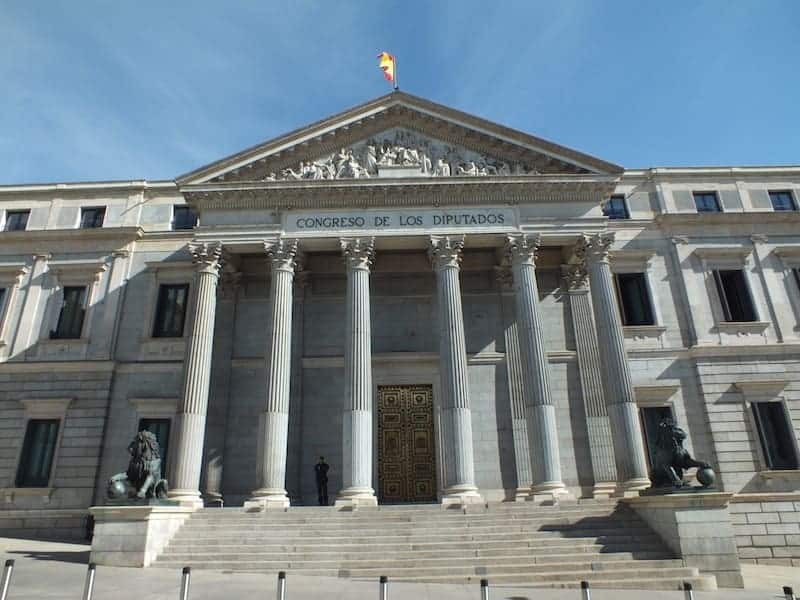
On the bus we will travel along the Paseo de la Castellana to the northern area of Madrid, where the financial district is located. There we will see the four enormous skyscrapers that stand in the Business Area, as well as the impossible balance of the Kio Towers.
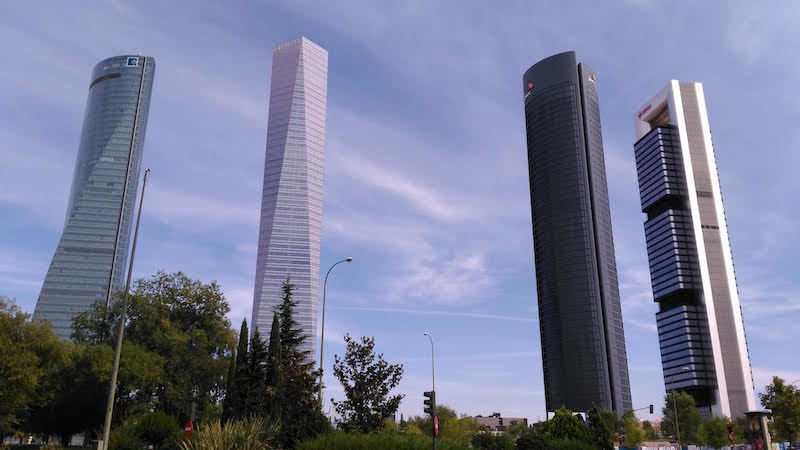
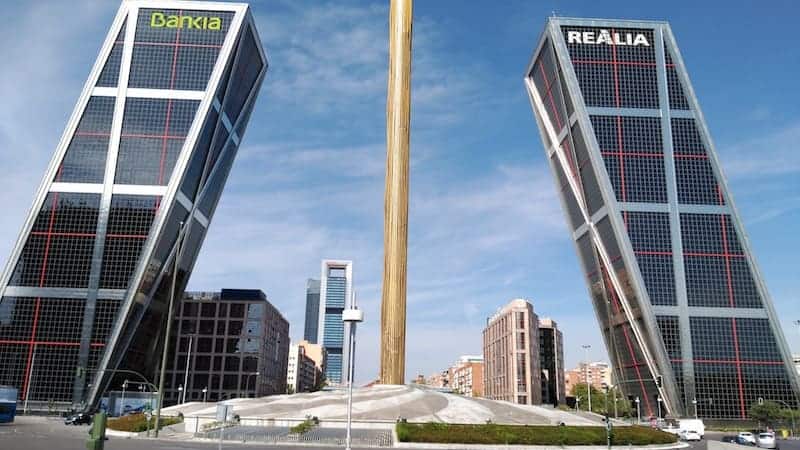
In short, this sightseeing excursion through Madrid offers you a broad first point of contact for the Spanish capital, in its essence. It gives a general overview of the city and an approximation of its most interesting points.
Upon finishing the bus route, we will continue with a guided visit to the Royal Palace, the spectacular residence of the Spanish royal family until 1931.
Guided tour to the Royal Palace (Palacio Real)
Discover on our guided visit to Royal Palace the immense heritage of this historic and extraordinary residence inhabited by the Spanish royal family until 1931. In addition, this tour allows you to avoid long queues at the entrance.
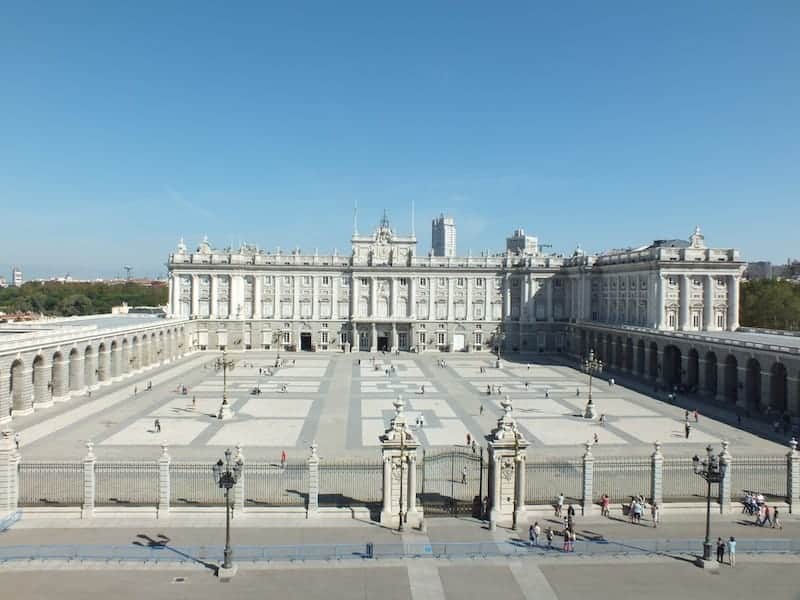
The Royal Palace was built over the course of two decades, from 1738 to 1759, which makes sense when you realize that we are talking about the largest Royal Palace in Western Europe, where there are more than 3,000 rooms, practically double the size of the Palace of Versailles or Buckingham Palace.
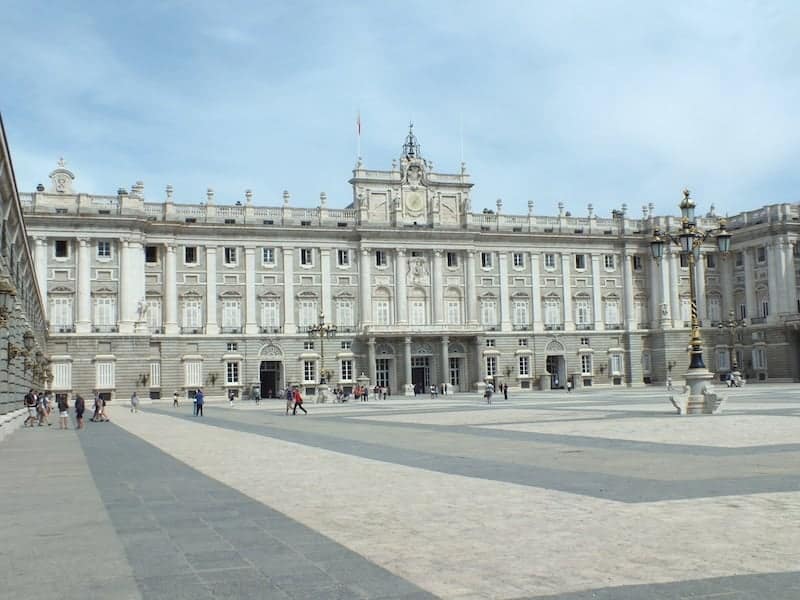
Our tour is centred on the grand protocol rooms, many of which are still used for official acts. On the other hand, the Palace is no longer used by the Spanish monarchs as a residence, which was the case for monarchs from Felipe V to Alfonso XIII. 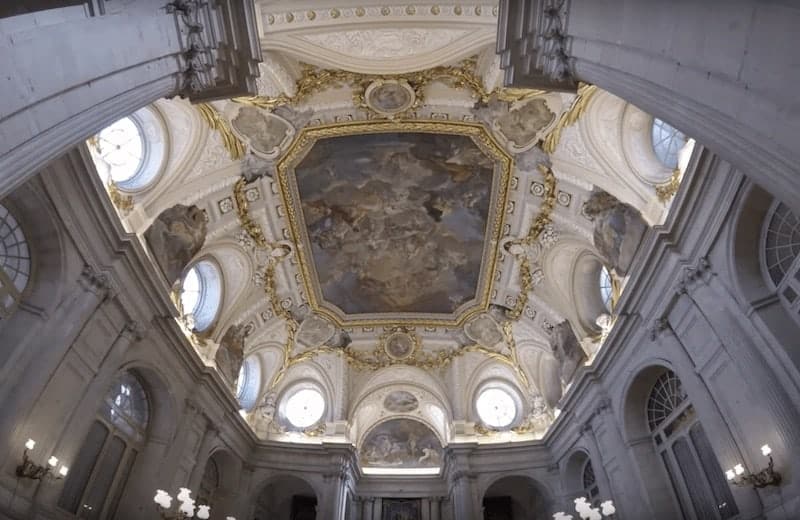
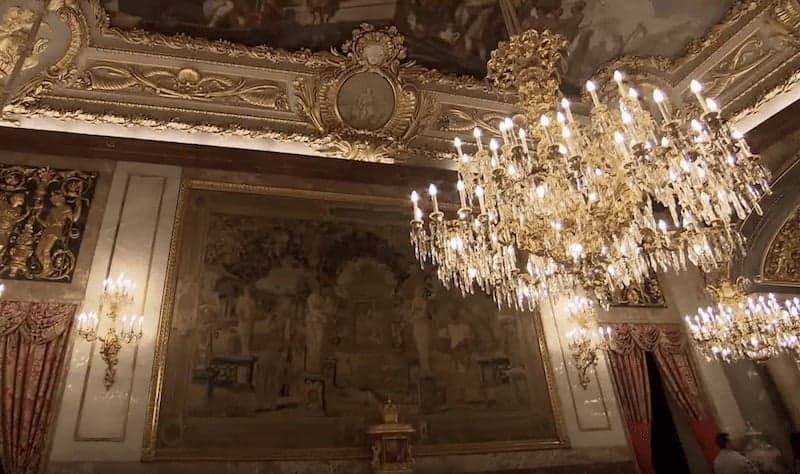
Therefore, the Royal Palace has become one of the most luxurious that Spain has had in recent centuries. This will be apparent from the first moment of the tour, when we ascend the monumental marble and granite staircase, where the crest of the royal family and a statue of Carlos III bid us welcome.
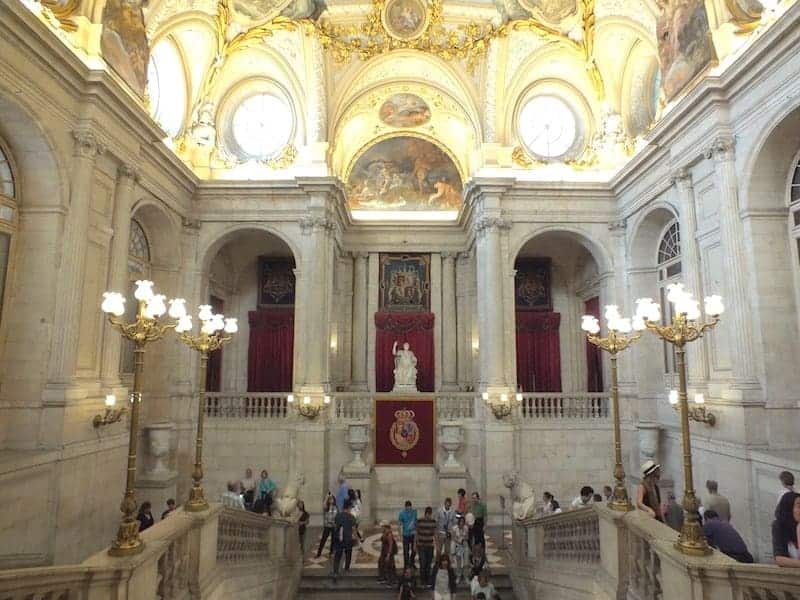
Those stairs will take us to the second floor, where the great official rooms are located. We will visit some of the rooms, like the Hall of the Halberdier, the Porcelain Cabinet, the Hall of Mirrors or the Throne Room, where the king solemnly receives his guests. The furniture, decorations, tapestries, paintings and numerous clocks in all of the rooms will surprise you.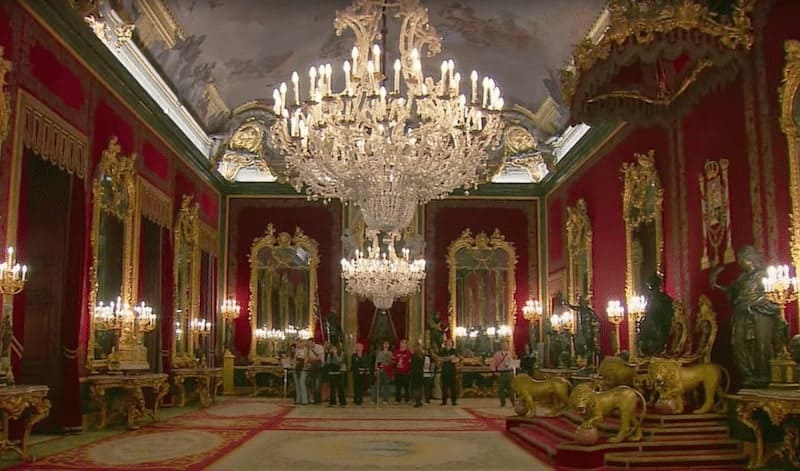
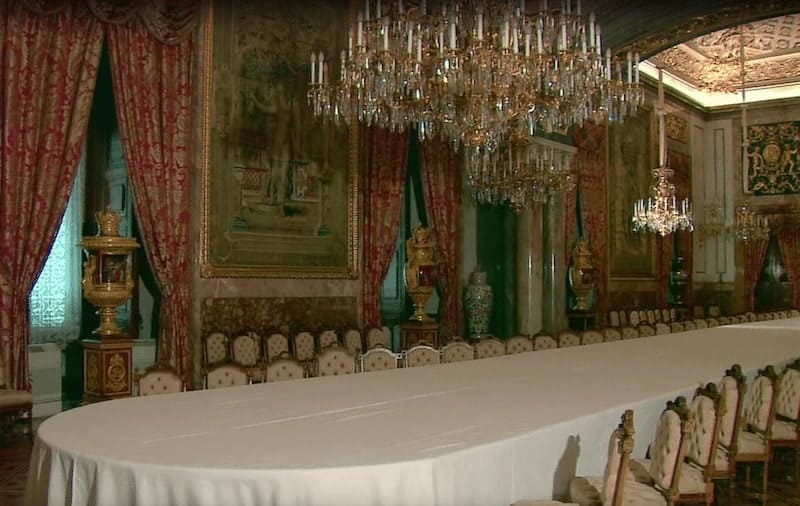
We will also visit the Royal Chapel, which is for the monarchs’ private use. It is a first-class work of architecture decorated with rococo and neoclassical paintings that ornament the walls and the large semi-circular cupola.
The Royal Chapel is the best finale we can think of for this guided visit through the Royal Palace of Madrid. However, we recommend visiting other places on your own, such as the impressive Armory, where some of the best collections of armaments from the 16th and 17th centuries are displayed.
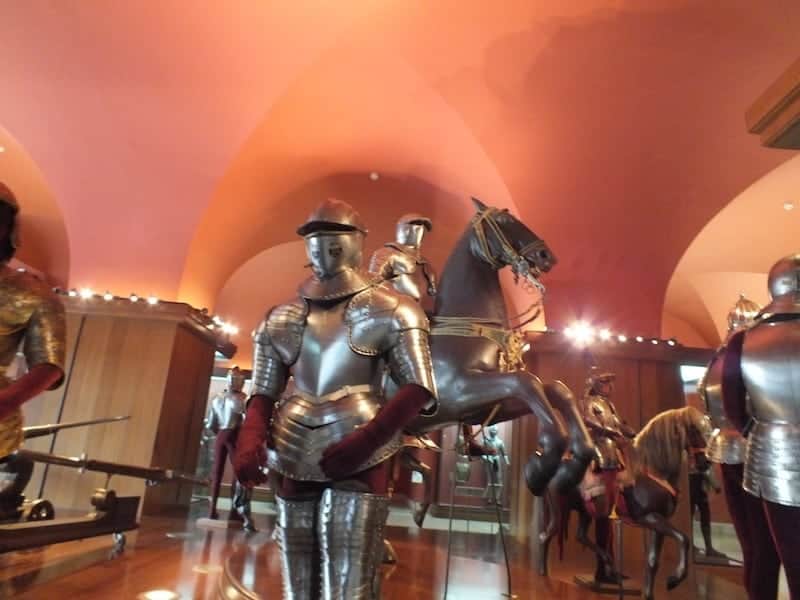
Neither should you miss the opportunity to walk through the Gardens of Sabatini, located behind the Palace, where you will be able to walk among trees, floral gardens and spectacular fountains.
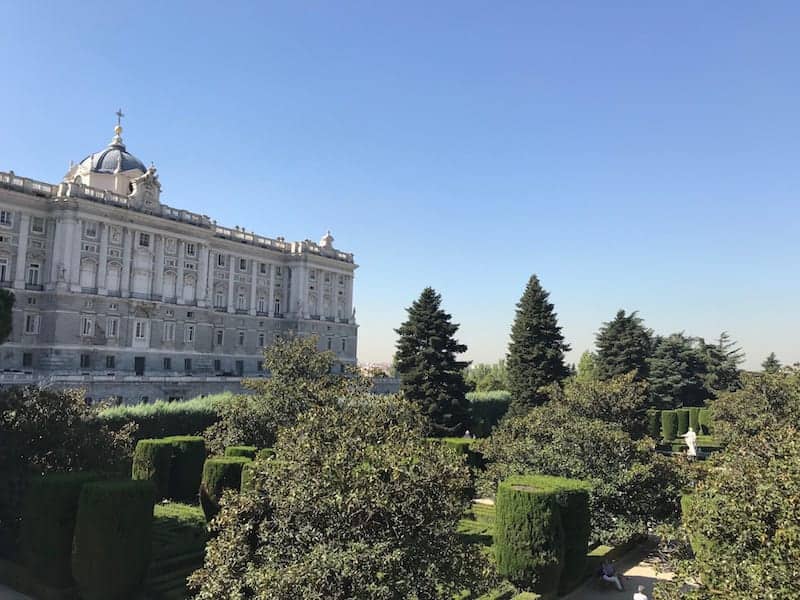
Finally, we also encourage you to take a walk through the Plaza de Oriente, where you can see the main facade of the palace, a great equestrian sculpture of King Felipe IV, and statues of the old Spanish kings.
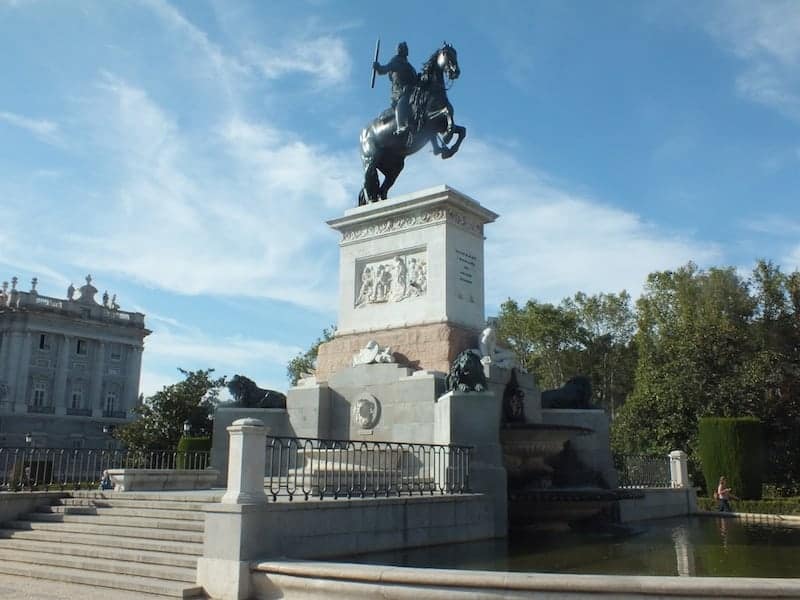
Plaza de Oriente is a good place to say goodbye to the solemn monument that is the Royal Palace, which, thanks to our visit, you are now much more familiar with.
Important: The itinerary can be altered by events or celebrations in the city (cultural events, sporting events, official events or works).


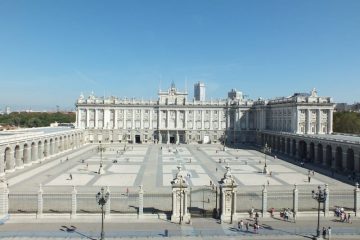
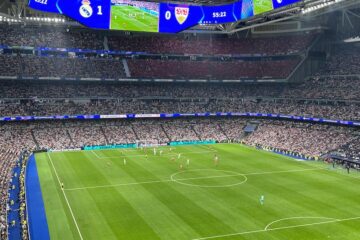
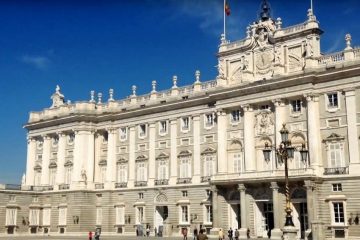
tour_reviews
comment_leave_a_review